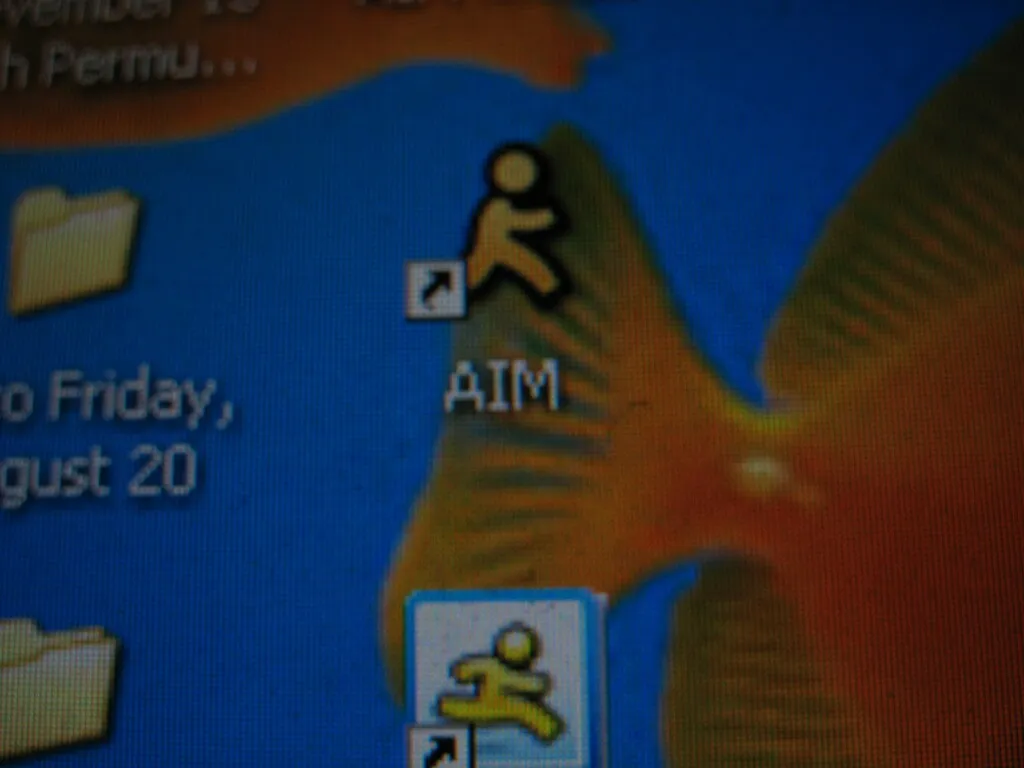AOL Instant Messenger, better known as AIM, will be laid to rest on December 15, 2017. AIM's parent company, Oath made the announcement on Oct. 6.
As one of the first widely adopted instant messaging applications, AIM, provided a new and personal way of interacting online. The chat app played an important role in the lives of the first American millennials. The nation was coming online while we were coming of age in the late 1990s and early 2000s. Whenever I reflect back on my adolecence and young-adulthood, AIM and its yellow running-man logo are a constant. Before Facebook, there was AIM - a toy, a tool, a game, a friend.
Message boards and email were slow, and chatrooms were chaotic. AIM was personal, private, instant, and free, providing a way to talk with our friends on the Internet, even if our parents were not AOL subscribers. Conversations were not restricted to one-at-a-time interactions. The app flashed, illuminating the desktop screen as we raced back-and-forth between conversations. Keeping up with the frenetic pace was a kind of game, improving our typing skills in the process. The unmistakable warped, loud, grinding sound of the 56k modem - a small price to pay for the freedom AIM enabled.
AIM was also part of the connective fiber keeping us in touch with our friends and family across the country when we left for college or the military. Several instant messaging services existed by then, but it was still one of the most popular. Long-distance phone service and text messaging were expensive. The fast Internet at school made the choice to use AIM an easy one.
My school was in Michigan, meaning that I stayed up later in the evening to talk to my friends and family in Minnesota. So I got into the habit of staying up late, pulling all-nighters to study or write papers. AIM stayed signed on in the background in case anyone else was awake, making the late nights away from home a little less lonely. Anyone who knows me well might see some similarities with my current online habits.
We'd leave our profiles logged-in instead of signing off, and an away message let our friends know why we weren't responding to them right away. Away messages were our out-of-office email, our answering machine; the precursor to a Facebook status or Snapchat story. They were tacky, informative, inspirational, and passive-aggressive. They were an art form.
But as our online communication habits changed, AIM failed to adapt for the mobile era. Facebook, YouTube, Twitter, and Instagram all rose to take the place of it and many other services. Email got faster, texting became cheaper and more capable. Instant messaging became ubiquitous. Quality video chat finally became a reality.
A fashionable narrative for the political media is the dominance of Big Tech. But AIM's final away message tells us something different. A relic of a different time, AIM's death serves as an important and timely reminder that all empires die in time.
Mobile chat apps of all kinds abound noawadays, ranging from the professional to the intimate. But they are all based on the same premise - having fun talking on the Internet with the people you care about. Despite the change and turbulence of the past 20 years brought by the Internet revolution, this principle remains the same. These technologies have built fortunes and toppled governments. But their usage all started as a way to say hello to our friends.
Rest in Peace, AIM.
Thank you for reading,
- Josh
Related Posts by Josh Peterson
- Welcoming Digg co-founder Kevin Rose to Steemit
- Lightening up on Dan Bilzerian over his Las Vegas Shooting reaction
- Why I don't want to talk gun politics after Las Vegas with you right now
- Lessons from 37 days on Steemit
- Why am I angry all of the time and where did my friends go?
- My first Steemit post: Introducing myself, and some initial thoughts
View History
View Steemit blockchain activity/edit history | View draft edit history on Github
For more information on STEEM and Steemit
If you're new to Steem and Steemit and would like to know more, check out the platform's FAQ, and Steem.Center, a Steemit-focused wiki built and maintained by the platform's users.
Interact with the Steem blockchain through several different platforms: Steemit, Steemd, SteemDB, Busy.org, ChainBB.
Other Steem apps include dTube , dSound, Steepshot, and dMania. Mobile apps include eSteem and Steepshot.
Enhance your Steemit desktop browser experience by downloading the Extreemit browser extension for Chrome.
New to blockchain technology and cryptocurrencies? Check out @heiditravels' videos on Steemit and YouTube to learn more.
If you're not on Steemit, but would like another way to show your appreciation for this piece besides sharing it on Facebook or Twitter, or you'd like to comment on it, please consider signing up for a Steemit account and voting for this piece. It doesn't get cost anything to sign up, and votes are really important because that's how I get paid on here. Thank you in advance. - Josh

